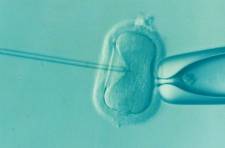INFERTILITY AND ITS MAJOR CAUSES AND TREATMENTS
Infertility is an issue that’s on the rise – not just in India but all over the world. It’s estimated that on an average, one out of every six couples has had issues with infertility. A diagnosis of infertility is given when a couple has been unsuccessful in trying to conceive after one full year.
Contrary to olden-day beliefs, female infertility only contributes to one-third of infertility problems. Another one-third is due to male infertility and the remaining portion is due to both genders and of unknown aetiology. It’s been estimated that there are about 20 million infertile couples in India, that is, about 10-14% of the country’s population. And the issue is no longer one of the urbanites alone as rural cases of infertility are also cropping up more frequently. In the past five years, infertility cases have gone up by 20-30% in the country.
Searching for the cause of infertility is complicated and akin to looking for the proverbial needle in the haystack. It could range from anything like genetic disorders, exposure to occupational hazards, obesity, hormonal imbalance, pollution, chronic diseases, advancing age, lack of physical exercise, etc. Here’s a look at some of the possible causes of infertility:
- Most infertility problems are due to problems in the fallopian tube as it could be blocked or have scarred tissues.
- A majority of infertility cases are associated with lifestyle issues, making it essential to follow healthy regimes of nutritious diets, sufficient exercise and kicking out stress and obesity.
- Ovulation abnormality due to hormonal imbalances caused by various factors.
- Age has a direct relation to infertility as the body’s vitality, strength and hormonal levels are at a peak before the age of 35 years, after which they start declining.
- Diagnosing and treating male infertility is comparatively more complicated. The sperm count, morphology, motility all need to be checked; aside from this, defects in the structure of genital organs, retrograde ejaculation as well as testosterone levels all need to be assessed too.
Getting the right diagnosis for infertility is the key to treatment- here are a few ways:
- Taking prescribed hormonal therapy to correct conditions arising from hormonal imbalances.
- Taking prescribed medications to induce ovulation, resulting in the release of multiple eggs.
- Taking antibiotics to get rid of infections.
- Surgery to remove blocks, adhesions, scar tissue or structural abnormalities.
- Intra-uterine insemination where semen is placed directly into the uterus.
- In vitro fertilization (IVF) where an egg is fertilized in the lab before transferring back into the uterus.
- Intracytoplasmic sperm injection (ICSI) into an egg.


